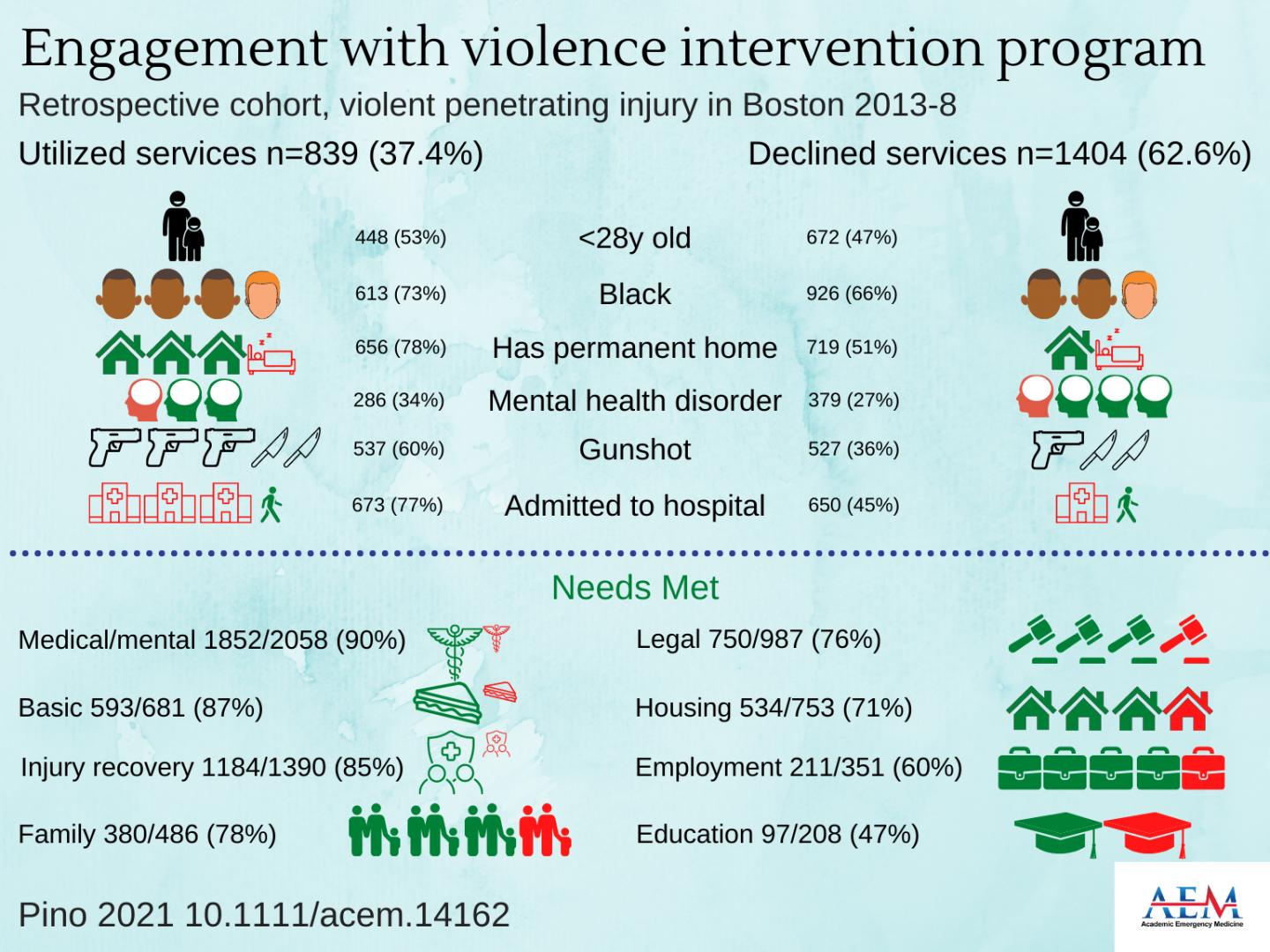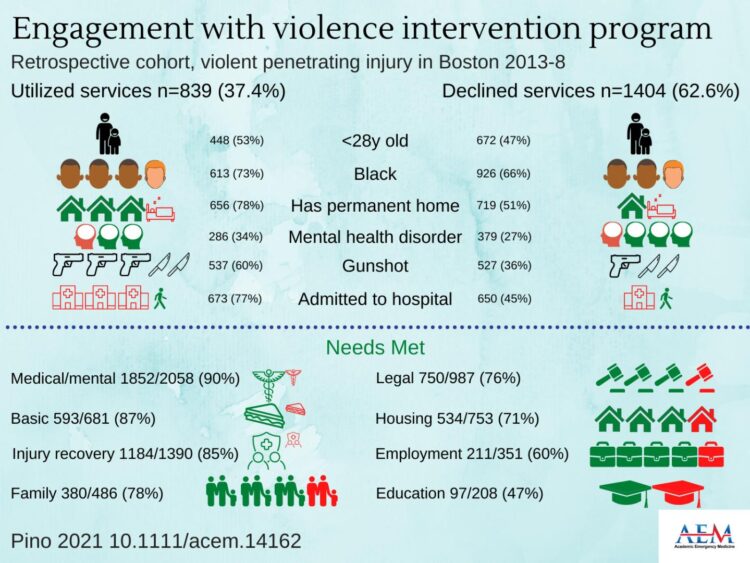
Credit: KIRSTY CHALLEN, B.SC., MBCHB, MRES, PH.D., LANCASHIRE TEACHING HOSPITALS, UNITED KINGDOM.
DES PLAINES, IL – A Boston violence intervention advocacy program is effectively engaging the client population that hospital-based violence intervention programs (HVIPs) have been designed to support. This is the conclusion of a study titled Boston Violence Intervention Advocacy Program: Challenges and Opportunities for Client Engagement and Goal Achievement, to be published in the March 2021 issue of Academic Emergency Medicine (AEM), a journal of the Society for Academic Emergency Medicine (SAEM).
According to the study, HVIPs should consider which types of client needs prove most challenging to address and which novel strategies will engage vulnerable populations not typically targeted by intervention programs. These results speak to the difficulties of program attrition and the complexities of altering the life course for victims of violence.
The lead author of the study is Elizabeth C. Pino, PhD, from the Department of Emergency Medicine and the Boston Violence Intervention Program at Boston Medical Center.
Commenting on the study is Tolulope Sonuyi, MD, an emergency medicine physician and assistant professor for the Detroit Medical Center and Wayne State University, respectively, who specializes in health-centered intervention and prevention strategies around community violence.
“With the increased cognizance of the impact that social determinants of health (SDOH) have on the health of emergency department patients, this is a timely study that nicely demonstrates the influence that critical SDOH domains play in the role of the chronic recurrent disease process of community violence. Furthermore, this study provides a framework to understand the impact that patient characteristics have on the uptake of therapeutic intervention and highlights the challenges that come with addressing the upstream factors of complex biopsychosocial disease processes such as community violence. This is important in informing efforts on a systemic and structural level so that more targeted, efficient, and customized strategies may be considered.”
###
ABOUT ACADEMIC EMERGENCY MEDICINE
Academic Emergency Medicine, the monthly journal of Society for Academic Emergency Medicine, features the best in peer-reviewed, cutting-edge original research relevant to the practice and investigation of emergency care. The above study is published open access and can be downloaded by following the DOI link: 10.1111/acem.14162. Journalists wishing to interview the authors may contact Tami Craig at [email protected].
ABOUT THE SOCIETY FOR ACADEMIC EMERGENCY MEDICINE
SAEM is a 501(c)(3) not-for-profit organization dedicated to the improvement of care of the acutely ill and injured patient by leading the advancement of academic emergency medicine through education and research, advocacy, and professional development. To learn more, visit saem.org.
Media Contact
Tami Craig
[email protected]
Related Journal Article
http://dx.





